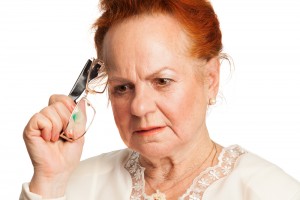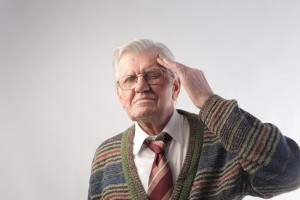
Electroconvulsive therapy (ECT) is one of the more controversial treatments offered by psychiatrists. For most people, information about ECT is primarily through media representations; for example its punitive use in Ken Kesey’s acclaimed book and Miloš Forman’s Oscar winning film starring Jack Nicholson: One flew over the cuckoo’s nest.
Modern ECT, referred to as modified ECT, involves the use of a general anaesthetic and muscle relaxant before an electrical stimulation is applied to one, or both sides of the head, with the intention of inducing a seizure. As a treatment, ECT is generally used in the treatment of severe depression, but it also more rarely used in the treatment of mania and schizophrenia.
As with all treatments ECT has side-effects: memory loss (brief loss commonly and longer-lasting loss more rarely), muscle pain, as well as the risks associated with general anaesthetic.
The evidence base for ECT is, in my opinion, inconclusive. A search of the Cochrane Library reveals one completed review from 2003 into the use of ECT in an elderly population; which concluded that there was too little evidence to draw conclusions (Stek et al, 2003), and a review protocol dated 2011 with no report of findings as yet (Leiknes et al, 2011).
A meta-analysis published in the Lancet (2003) found favourable outcomes for ECT in terms of effect size and also evidence for its superiority over medication. The authors of the review commented on the absence of long-term follow up in many trials and also the lack of comprehensive assessment for memory impairment among included trials.
Another review by Diana Rose and colleagues in 2003 suggested that studies into the efficacy of ECT needed to include a range of outcome measures in order to better inform decision-making by patients.
If we are to continue using ECT, we need evidence to support its use, so a recent study published in the British Journal of Psychiatry could be welcomed. The paper sought to compare the speed of response to ECT versus medication in an elderly population (Spaans et al, 2015).

One of the notable side effects from ECT is memory loss.
Methods
This study represents a re-analysis of pre-existing data from two trials comparing different ECT administration techniques and a comparison of medication trial (Venlafaxine versus Nortriptyline).
Participants were selected on the basis of:
- Being aged 60 years or older
- Having a diagnosis of depression according to a structured diagnostic interview schedule
- Having a depression rating score of moderate or greater severity (two scales were used)
Participants were excluded if they met the diagnostic criteria for a bipolar depression. All participants from the medication trial (n=81) were included whereas as the previous ECT trial had included participants from the age of 18 most had to be excluded from this report (n=47 included 69 excluded).
Information describing participants was available at baseline, 1, 3, 5 weeks and at the end of study (6 weeks for ECT, 12 weeks for medication). Not all the data for the defined measures was available at each assessment point.
For outcomes the authors defined remission as reaching a rating scale cut-off of less than 10 on the Montgomery-Asberg Depression Rating Scale (MADRS) within 5 weeks as the primary outcome measure. A secondary outcome measure of Hamilton Rating Scale (HRSD) of less than or equal to 7 at 5 weeks was also defined.
Results
The two groups did not differ at baseline in terms of reported clinical or demographic factors, except that the ECT group had received significantly more antidepressant medications (2.4 vs 0.9) prior to recruitment into the trials.
The results are summarised below as mean values with standard deviation and p-values for conducted tests of significance:
- Mean time to remission (MADRS):
- ECT 3.07 weeks (s.d. 1.1) vs
- Medication 3.95 weeks (s.d. 1.03) p=0.008
- Mean time to remission (HRSD):
- ECT 3.07 (s.d. 1.04) vs
- Medication 3.50 (s.d. 1.28) p=0.229
- The hazard ratio for remission within 5 weeks (according to MADRS) for ECT vs medication was 8.2 (95% confidence interval 3.6 to 19.0, p < 0.001) after correction for identified possible confounding variables
- Following participants until trial conclusion (6 weeks for ECT, 12 weeks for medication) produced remission rates of 63.8% for ECT vs 33.3% for medication
Conclusions
The authors concluded:
Considering the substantially higher speed of remission, ECT deserves a more prominent position in the treatment of elderly patients with severe depression.
Discussion
As in the interpretation of many research papers, your reading of these findings likely depends on your pre-existing attitude towards the treatments on offer. So disclosure of interest. I have delivered ECT as part of my training, but within my own practice I have only ever met one patient who the team was considering for treatment with ECT. After discussion we agreed to a course of intravenous benzodiazepines for this person prior to ECT and this led to a good response without the need for ECT. Overall I have never seen a positive case of ECT delivered in my clinical practice, whereas during on-call work I have dealt with a number of negative responses to ECT including profound muscle pain and distress at memory loss.
My own reading of the existing literature, combined with my clinical and personal experience, leads me to the conclusion that I would not personally wish to receive ECT under any circumstances. So biases suitably disclosed, let’s move onto the paper.
Strengths and limitations
This is a post-hoc analysis of pre-existing trial data. The authors claim that the two cohorts are sufficiently matched in order that this is a reasonable analysis. I’m not certain I agree:
- The ECT cohort was recruited from both inpatient and outpatient settings, whereas the medication trial recruited solely among inpatients. We are not provided with this information in this report.
- Both cohorts had significantly high numbers of participants describing psychotic phenomena (53.2% for ECT vs 49.4% for medication). Participants in the ECT trial received a variety of medications including antipsychotics and lithium alongside antidepressants, whereas those in the medication trial could at most receive Haloperidol (5mg/day) or Risperidone (2mg/day). These details are not described in this report – in my opinion they probably should be alongside the description of antidepressants taken.
- Both the original trials had dropouts not completing the entire protocol: 87/116 completing ECT and 68/81 completing the medication trial. Data analysis was handled in an intention-to-treat manner to manage dropouts, which was not described in this report.
- Finally, side-effects from treatment are not reported here. ECT and antidepressants have a number of quite distressing side-effects that may influence the decision making process in relation to treatment choice.
In summary, this paper presents a post-hoc analysis that the authors claim supports an increase in the use of ECT. I would argue that they have not provided sufficient information here to support this claim and that further, well-designed studies are necessary if we do not believe there is already sufficient evidence in relation to the role of ECT.

Do we have sufficient evidence to use ECT to treat depression in older people?
Links
Spaans, H. P., Sienaert, P., Bouckaert, F., van den Berg, J. F., Verwijk, E., Kho, K. H., et al. (2015). Speed of remission in elderly patients with depression: electroconvulsive therapy v. medication. The British Journal of Psychiatry, 206(1), 67–71. doi:10.1192/bjp.bp.114.148213 [BJP Paywall]
Stek ML, Wurff van der FFB, Hoogendijk WJG, Beekman ATF. Electroconvulsive therapy for the depressed elderly. Cochrane Database of Systematic Reviews 2003, Issue 2. Art. No.: CD003593. DOI: 10.1002/14651858.CD003593.
Leiknes KA, Berg RC, Smedslund G, Jarosch-von Schweder L, Øverland S, Hammerstrøm KT, Høie B. Electroconvulsive therapy for depression (Protocol). Cochrane Database of Systematic Reviews 2011, Issue 5. Art. No.: CD009105. DOI: 10.1002/14651858.CD009105.
UK ECT Review Group. (2003). Efficacy and safety of electroconvulsive therapy in depressive disorders: a systematic review and meta-analysis. The Lancet, 361(9360), 799–808. doi:10.1016/S0140-6736(03)12705-5 [PubMed abstract]
Rose, D., Fleischmann, P., Wykes, T., Leese, M., & Bindman, J. (2003). Patients’ perspectives on electroconvulsive therapy: systematic review. Bmj, 326(7403), 1363–0. doi:10.1136/bmj.326.7403.1363 [PubMed open access]
Kok, R, Nolen W and Heeren T (2007) Venlafaxine versus nortriptyline in the treatment of elderly depressed inpatients: a randomised, double-blind, controlled trial. International Journal of Geriatric Psychiatry 22, 1247-54 [PubMed abstract]
Spans, H P et al. (2013) Efficacy and Cognitive Side Effects After Brief Pulse and Ultrabrief Pulse Right Unilateral Electroconvulsive Therapy for Major Depression: A Randomized, Double-Blind, Controlled Study. Journal of Clinical Psychiatry 74(11):e1029-36 [PubMed abstract]




RT @Mental_Elf: ECT for depression in the elderly http://t.co/cXyw2uLFEC
@Mental_Elf art art more art
Paula Gardiner liked this on Facebook.
Raluca Lucacel liked this on Facebook.
Olivia Cialdi liked this on Facebook.
@Mental_Elf @dyslxicRant @dyslxicRant sounds v much zap & miss to me!
Kath Ebsworth liked this on Facebook.
The Mental Elf liked this on Facebook.
#ECT for #depression in the elderly http://t.co/HKJd5YZI3Y A review of the #evidence from @Mental_Elf
My thoughts for @Mental_Elf on a recent study on – ECT for depression in the elderly http://t.co/PzaizRoj6A
@shrinking81 @Mental_Elf Ban
@IntervalThinks @Mental_Elf Succinct argument.
@shrinking81 @mental_elf do u think if you had seen some very positive responses in practice u would change your mind about ECT?
@mental_elf @shrinking81 we should let the evidence speak for itself but its a challenge not to be swayed by personal experience
@mark_bolstridge @mental_elf For me the evidence is unclear, which means I have to rely on experience.
@mark_bolstridge @Mental_Elf @shrinking81 exactly – it shouldn’t be about anecdotes one way or the other
@mental_elf @shrinking81 I worry that if you start with a preconceived assumption you will only see what you want to see in the data
@NursePrincessJ – I know we have discussed role of ECT in the past – any comments on this blog? http://t.co/PzaizRoj6A
Disagree. Prefer ECT if I had severe depression-more effective/faster/no drug interactions
http://t.co/czRlzrqI5k
@Mental_Elf
@AllenFrancesMD @Mental_Elf ECT is NEVER justified in any patient population. Nobody knows how it works or IF it works.
@AllenFrancesMD @Mental_Elf do you think you could not promote vile “treatments” on your feed please? disgusted
@AllenFrancesMD @Mental_Elf Never. Nurse friend fainted when she witnessed it. Only person I know who had ECT believes it gave him stammer.
.@AllenFrancesMD @Mental_Elf hmm…I’d rather welcome an end to grieving people that are already in #grief…and therefore don’t “act happy”
@AllenFrancesMD @Mental_Elf but high relapse rates
Mental Elf: ECT for depression in the elderly http://t.co/IsnvoZjAQC
ECT for depression in the elderly- research findings http://t.co/gOAw9tzTVQ
Don’t miss: ECT for depression in the elderly http://t.co/cXyw2uu4N4 #EBP
@Mental_Elf: ECT for depression in the elderly http://t.co/nJsnRZ3deF I have seen quick improvement with ECT and would still prefer to meds
@LiaisonLawson @Mental_Elf But when ECT is used without consent, it’s utterly barbaric.
@MaxYeshe @Mental_Elf do you mean when people are too unwell to consent? They are asleep throughout these days, so actually quite peaceful
@LiaisonLawson @Mental_Elf I mean forcibly giving ECT to people who don’t want ECT.
@LiaisonLawson @Mental_Elf From my point of view as a Shiatsu student, ECT is like trying to fix your smartphone with a sledgehammer.
@LiaisonLawson @Mental_Elf Changes in brain chemistry with depression are only a symptom. The deeper cause seems to be Chi disharmony.
@LiaisonLawson @Mental_Elf if we’re doing anecdote & personal prefs, I’d have an an AD stating no pills, just the mains. No doubt.
@Mental_Elf Positive experience w/ECT in ’04 deeply depressed, lengthy delusional episode.Rapid taper. Studies re:use if compliance factor?
Not sure declaration of anecdotes is useful here RT @Mental_Elf: Don’t miss: ECT for depression in the elderly http://t.co/4vc5lYHG7C #EBP”
ECT for the elderly http://t.co/bqubI7Lqzc Psychiatrist author says he’d never want ECT himself & has never seen a positive outcome.
Psychiatrist author fails to point out that as a forensic shrink he won’t see many cases needing ECT http://t.co/qpGyEv4vFl
Sorry not a good review of paper. Author to be fair admits bias, rotten cherry picks to dismiss data he doesn’t like http://t.co/qpGyEv4vFl
I would imagine the placebo is strong with ECT http://t.co/zYJVrHGkaE
Lucy Riddett liked this on Facebook.
Going to be more fair and say blog author did pick out some problems with paper http://t.co/qpGyEv4vFl
.@shrinking81’s blog about ECT for depression http://t.co/cXyw2uu4N4 has sparked an interesting discussion: https://t.co/dnWMqSRzuH
@Mental_Elf @shrinking81 ECT 4 depression caused brain damage & epilepsy in patient I C & depression + NOT a FAN! http://t.co/DXBnXa5GwC
ECT for depression in the elderly http://t.co/MQnxprdWRV via @mental_elf
Forensic psychiatrist declaring on ECT? Anecdotally, I’ve seen miraculous life-saving turnarounds in older people with ECT. I’ve had patients self-presenting and begging for ECT in such early stages of depressive recurrence that we would have advised them to go for a walk every day if not for their previous history. It is a tool in our armoury which is not lightly prescribed. In my experience of forensic psychiatry, I never saw a patient improve to a level where I felt the risks were ever minimised enough for return to community living. Doesn’t mean that’s the truth, it means I didn’t have that experience because I choose not to work in that field. This site goes down in my estimation with posting such biased opinion from people who seem barely more experienced than the layman, especially given it’s rise to prominence as a previously useful site for distilling information into bite sized chunks.
Lawsuits taking place on a national level here in the US around ECT devices. See site ectjustice.com and 5 videos on YouTube under ds electroshock to learn more. Lawsuit also in England and medical malpractice firms interviewing.